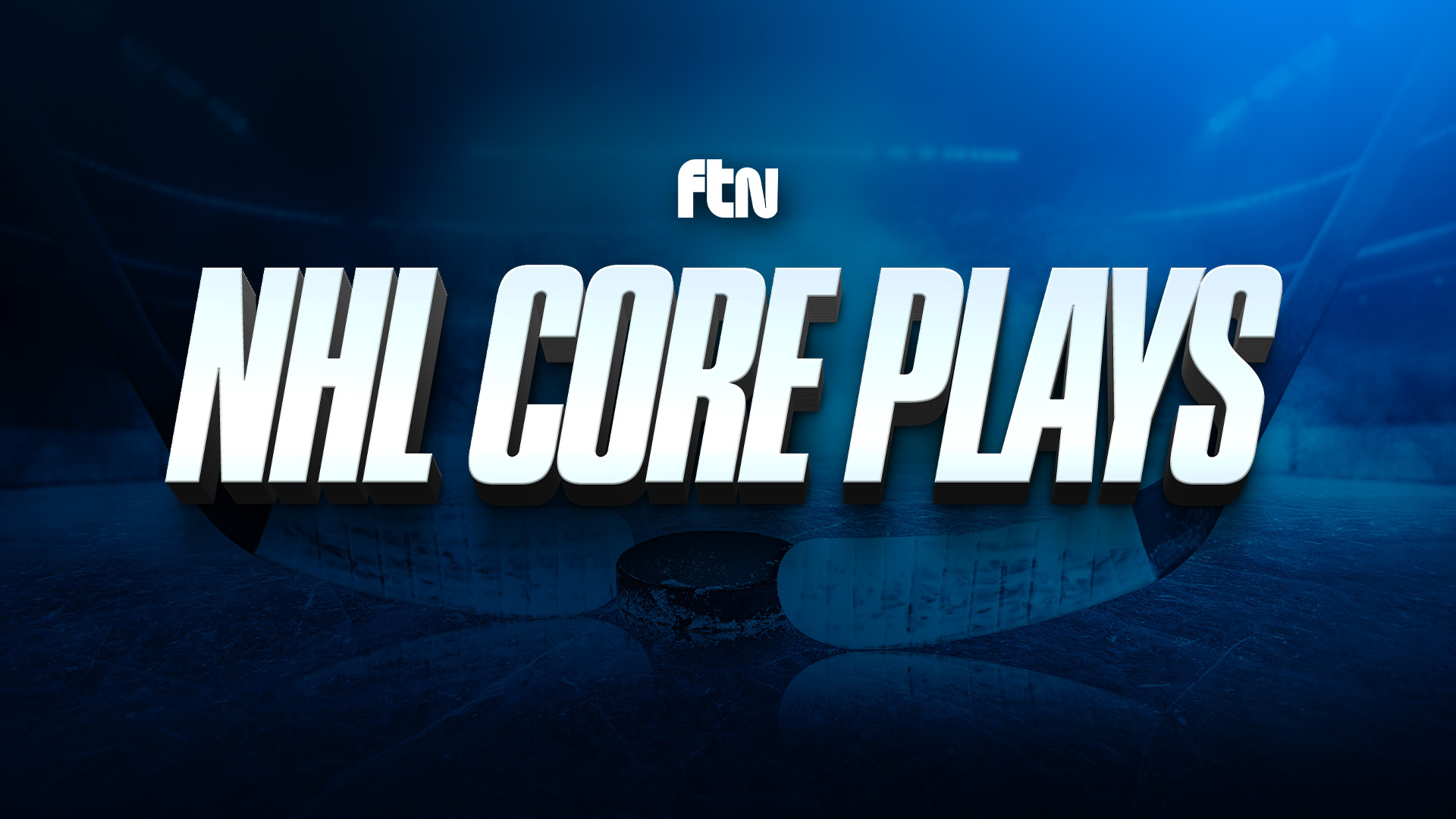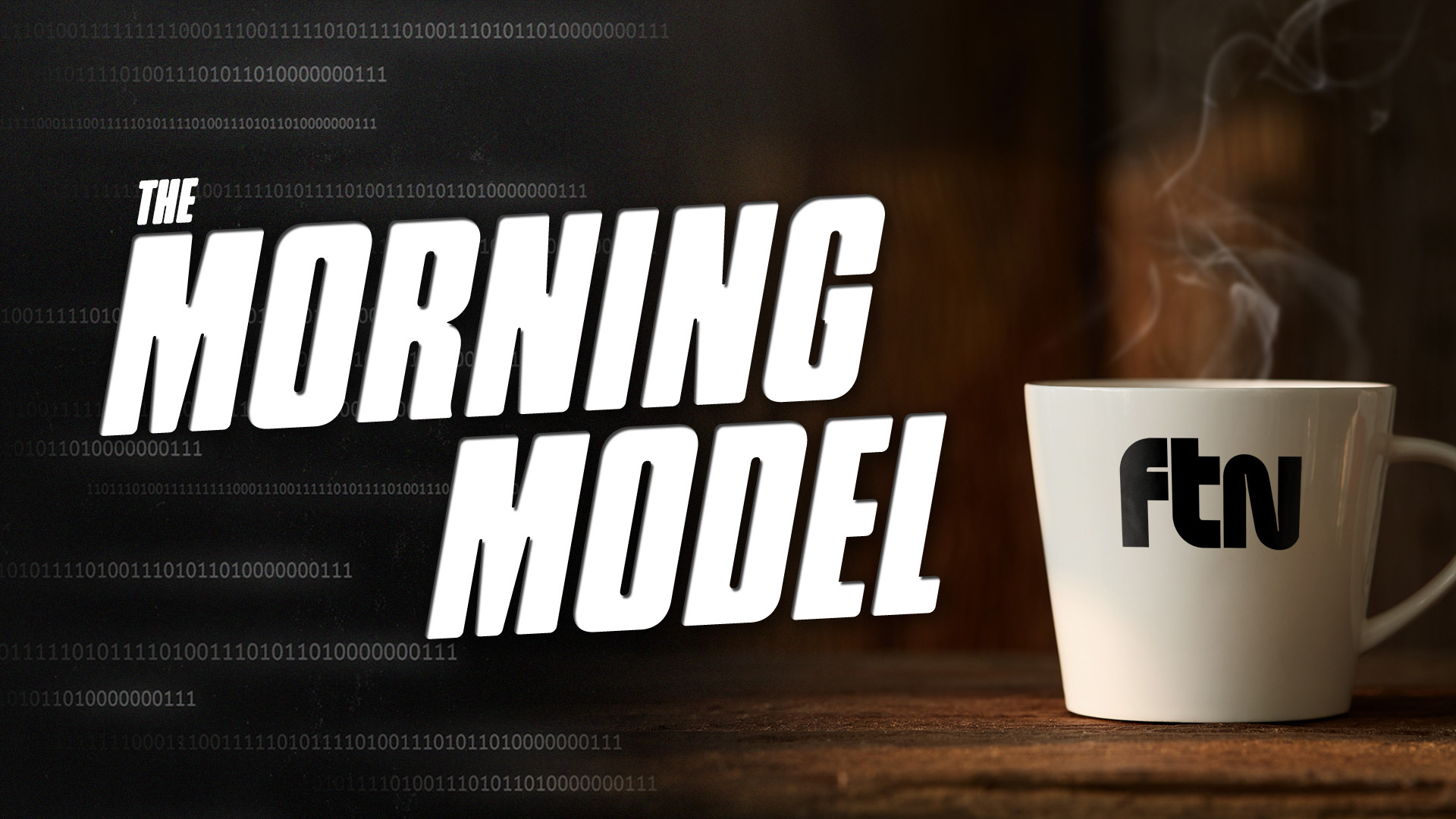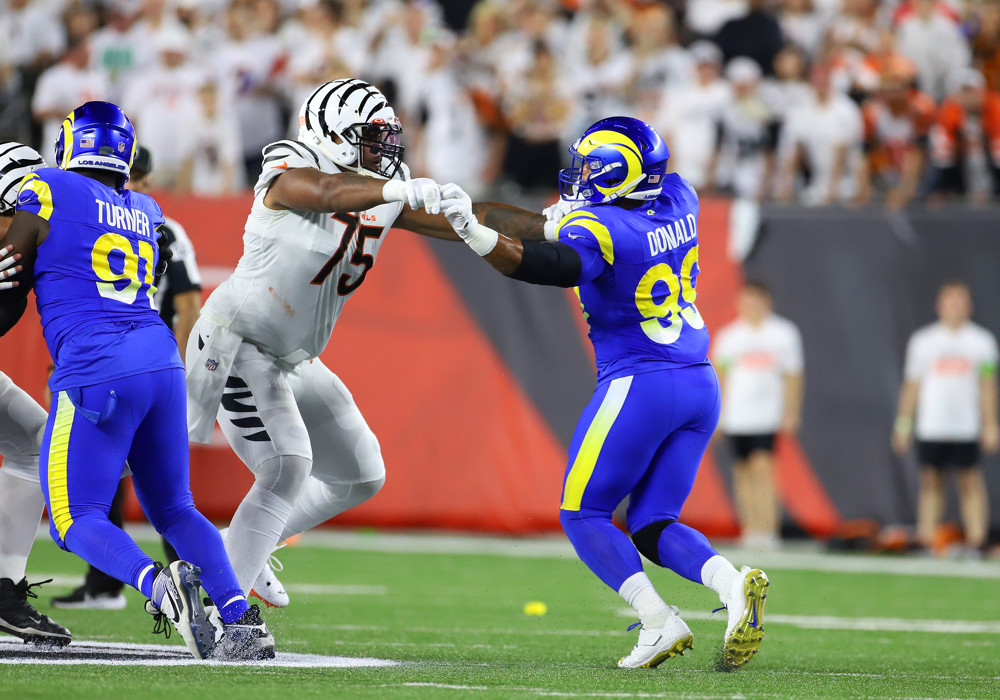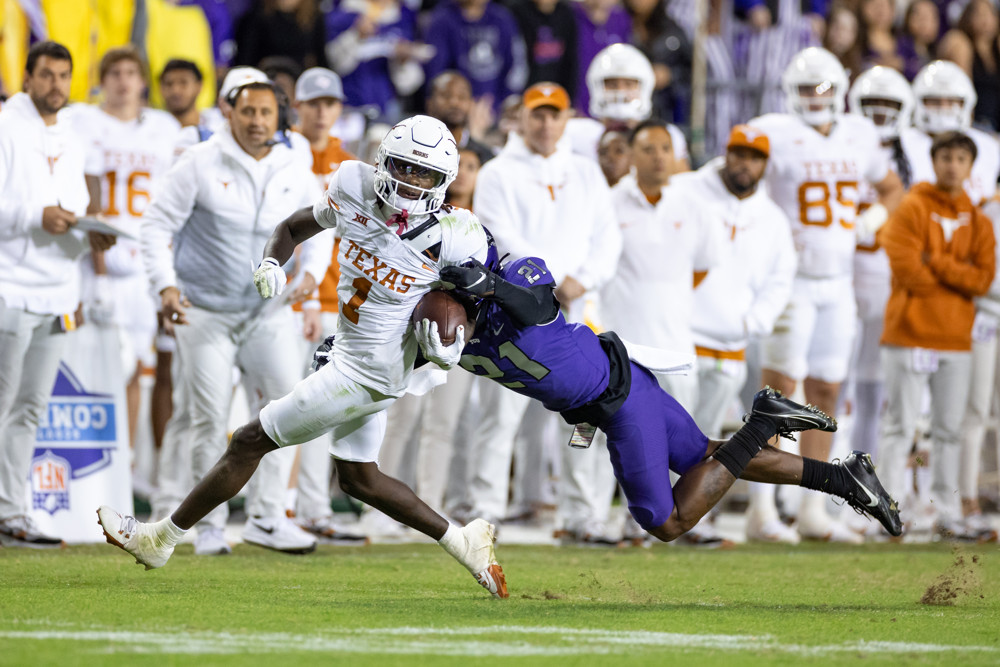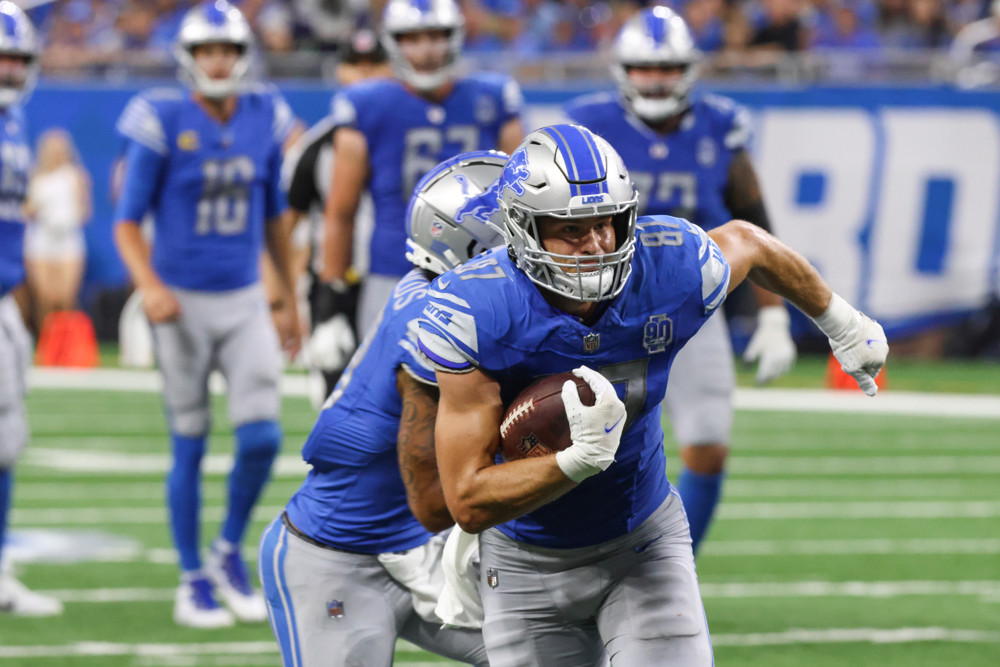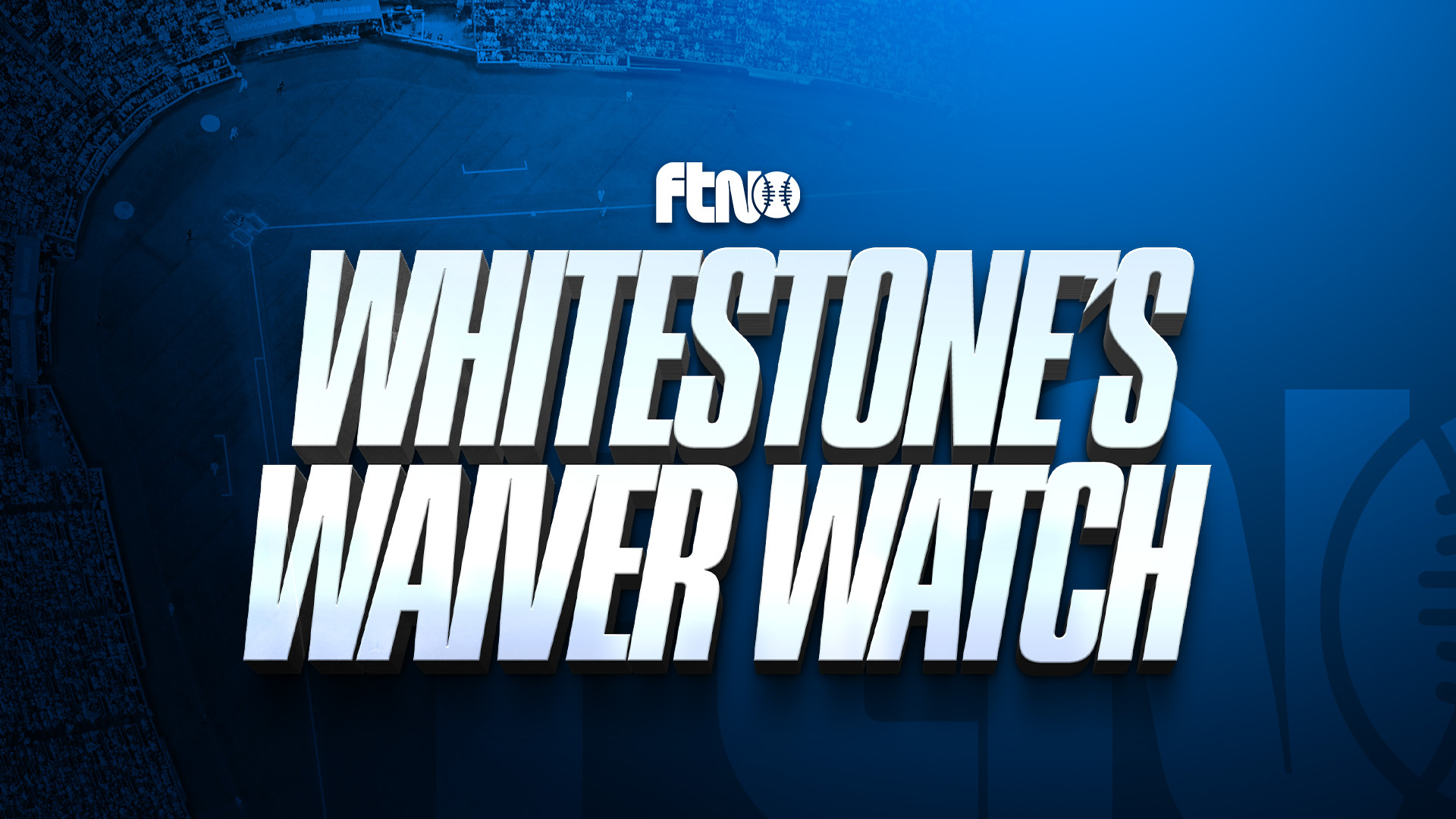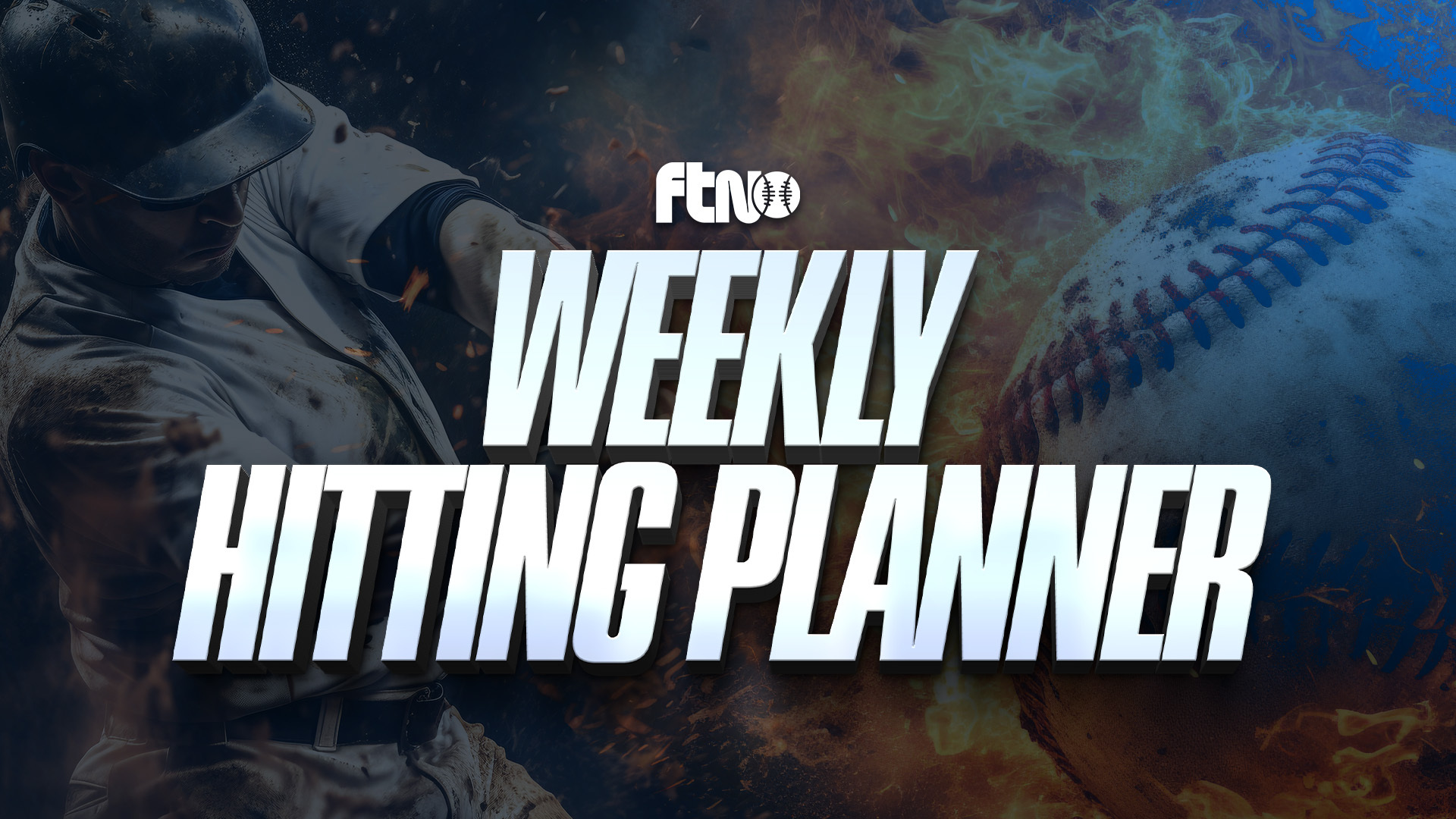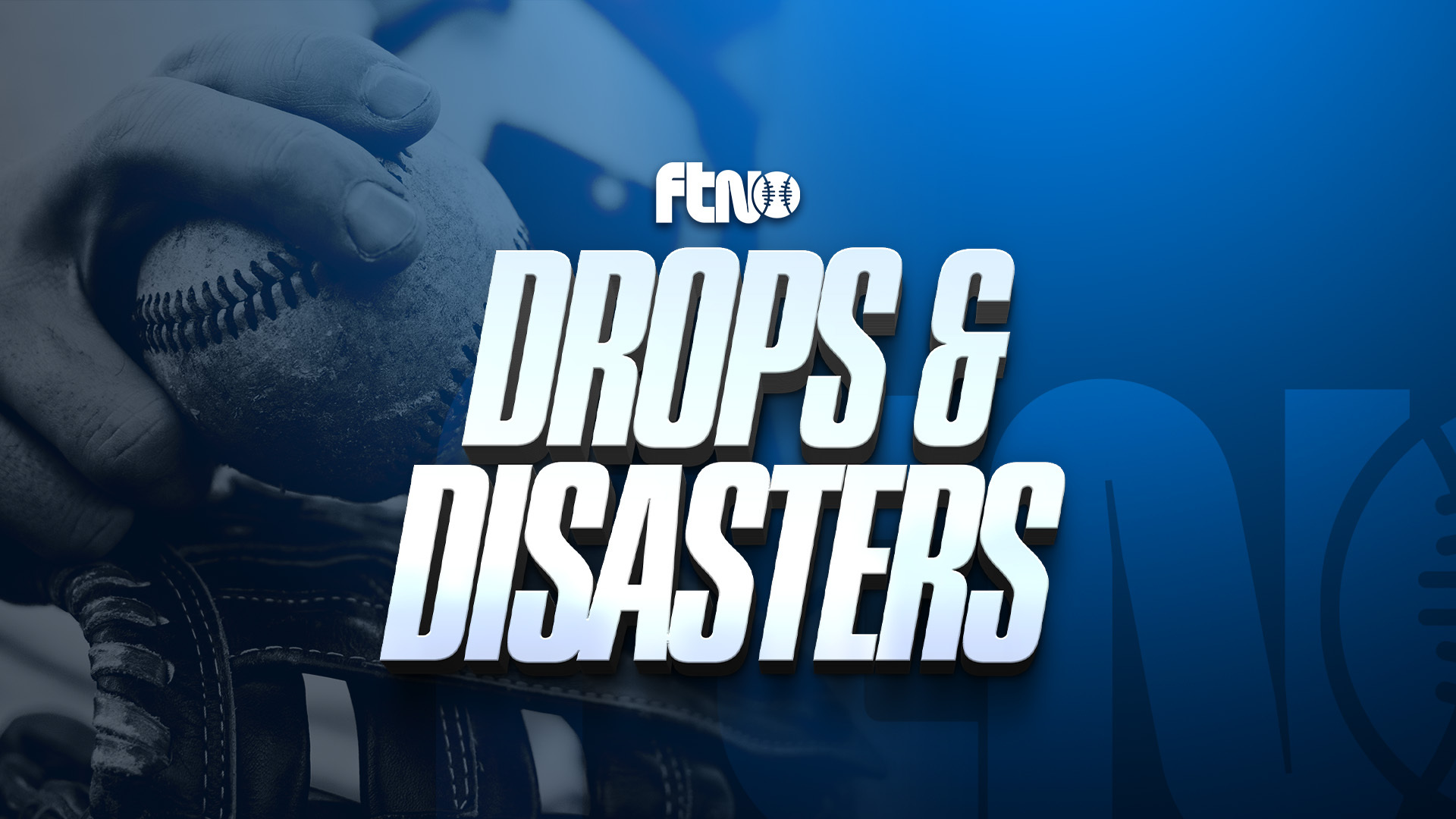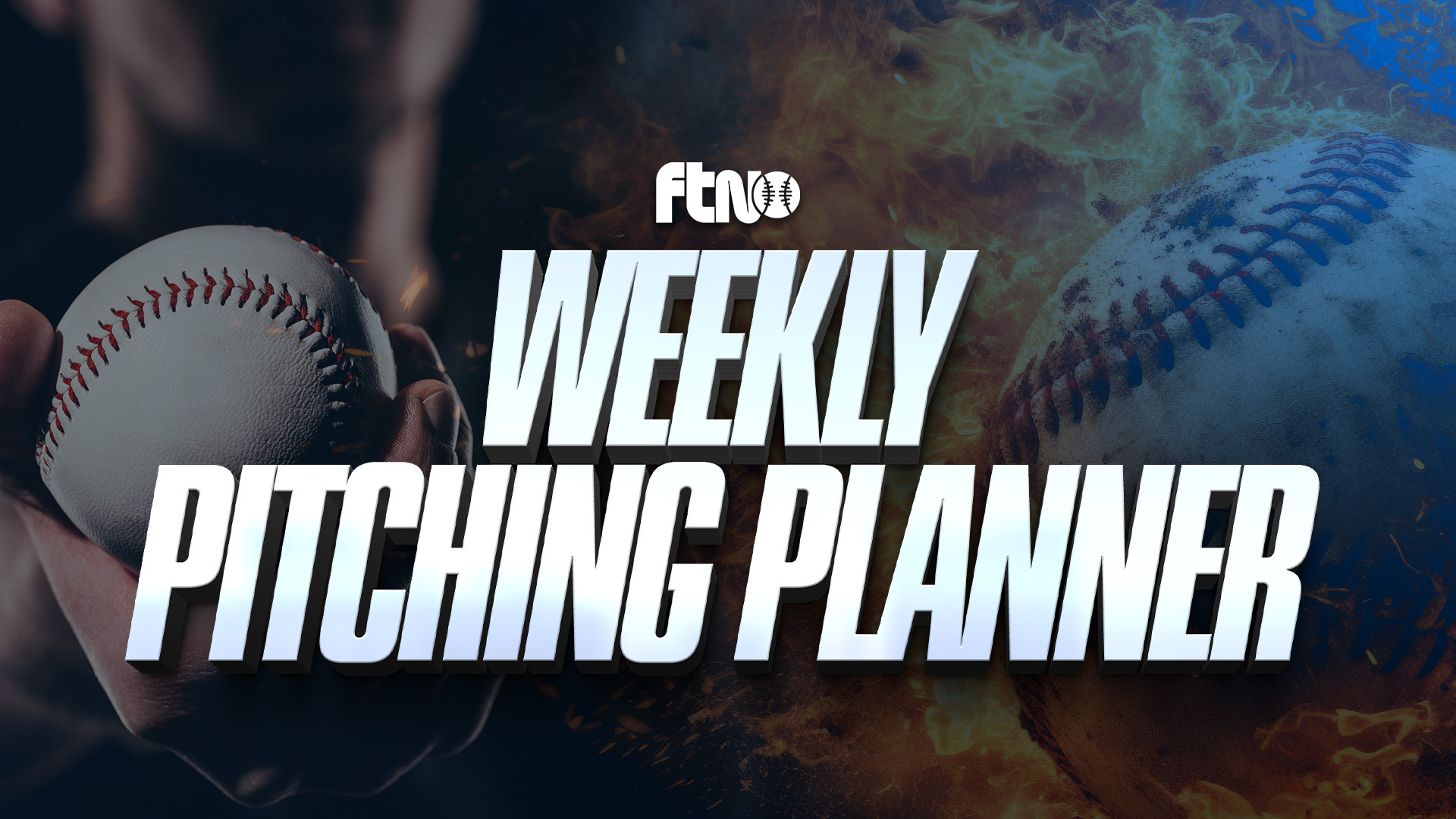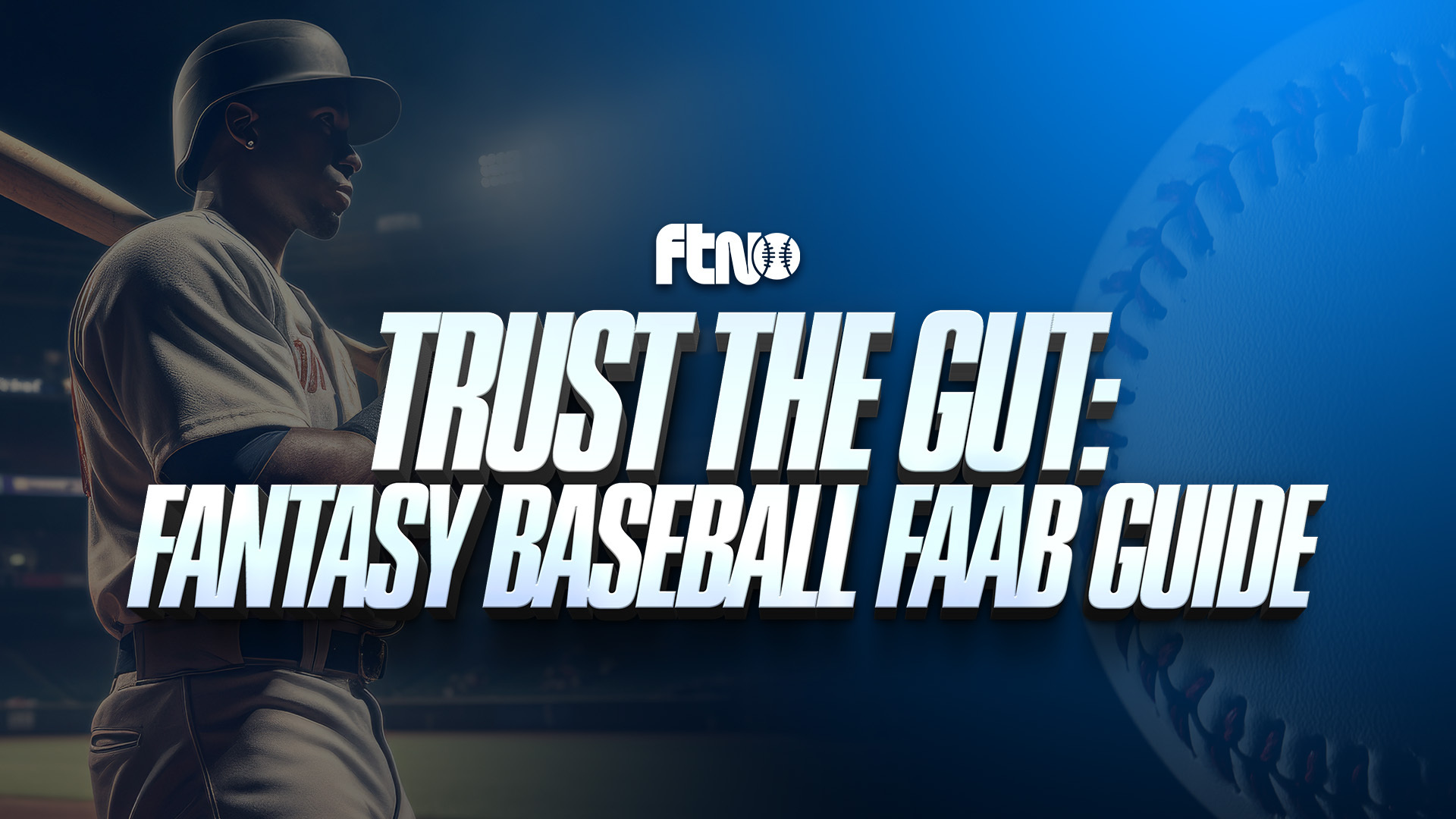
Be bold. I’m sure you’ve heard that advice before.
Going outside your comfort zone is a necessary skill to have in this cut-throat world. Taking risks is the only way you’ll ever hit it big. You miss 100% of the shots you don’t take.
These are all cliches people use to encourage you to take chances in your life. Sometimes, being bold is a good thing. Sometimes, being bold takes a lot of courage. Other times, being bold has consequences. Or backlash.
While I was brainstorming ideas for this fantasy baseball article, I couldn’t help but think of that Pringles ad from several years back.
Now that’s what I call bold. The cojones needed to pull off that stunt pales in comparison to “being bold” in your fantasy baseball draft. Taking chances in fantasy baseball won’t have any real-life consequences – except for maybe a small hole in your wallet. You won’t have your girlfriend’s father chasing you down the hall – unless you run his team, of course, and your bold strategy completely backfires. Ha.
OK, enough of that. Let’s get back on track. It’s famously been said that, “you can’t win your draft in the first round, but you sure can lose it.” Well, can you win your league by going starting pitcher, starting pitcher, starting pitcher in the first three rounds? Can you win your league by “punting” hitters and relying on the waiver wire to save you down the road? Let’s find out.
This is Part 1 of a two-part series that will examine “extreme” strategies for your fantasy baseball draft. Today, we’ll look at the pitcher-heavy draft strategy and discuss how you can pull it off and still compete for a title. Yahoo!’s Dalton Del Don is synonymous with this strategy – and he’s still employed. So, as Kevin Garnett would say, “Anything is possible!”
The Pitcher-Heavy Draft Strategy
This strategy covers every number on the 1-10 scale depending on what league/site you’re on. If you’re in a head-to-head points league, this strategy is much easier to pull off than if you play in the NFBC. Category leagues, in general, are probably the toughest leagues to execute this strategy. It’s simpler to utilize this strategy in an auction draft versus a snake draft.
You get the point. Since I know our loyal FTN subscribers participate in all different kinds of fantasy baseball leagues, I’m going to dabble a bit with all of them. But let’s mostly focus on the NFBC, since it’s probably the most popular site with our audience.
NFBC Pitcher-Heavy Strategy (Snake)
True to this article’s topic, let’s begin with the boldest of bold leagues to deploy this strategy. Whether it’s the Rotowire Online Championship or any other snake draft on the NFBC, you’re taking a serious risk neglecting hitters in the early rounds.
But that doesn’t mean the strategy can’t be executed. Below, I’ll examine a potential scenario out of the No. 12 draft spot.
Obviously, selections by your leaguemates may vary, and I’m using NFBC ADP as a reference. I’m also using general ADP (not last two weeks, last month, etc.). That’s because values will change week-to-week and month-to-month. Just FYI.
- 12th overall: Gerrit Cole, New York Yankees
- 13th overall: Corbin Burnes, Milwaukee Brewers
Neither of these players has an ADP inside the top 15, so in theory, you’d already be “reaching” by drafting those pitchers with the final pick of the first round and the first pick of the second. However, you’ve already locked up two aces and potentially a major edge in the wins, strikeouts, ERA and WHIP.
 Your next selection would come 36th overall. As it happens, ADP has Josh Hader listed in that exact spot. Let’s take it one step further and say you use your fourth-round pick (37th overall) on one final pitcher. That’s Shane McClanahan. Now you have Cole, Burnes, Hader and McClanahan on your roster.
Your next selection would come 36th overall. As it happens, ADP has Josh Hader listed in that exact spot. Let’s take it one step further and say you use your fourth-round pick (37th overall) on one final pitcher. That’s Shane McClanahan. Now you have Cole, Burnes, Hader and McClanahan on your roster.
That’s a filthy start to your pitching staff. Your ratios should be pristine. You’ll rack up a sensational amount of K’s and wins and lock down a chunk of saves. But, you’ve accumulated literally nothing in the hitting categories. So what do you do now?
Like a pendulum, it’s time to swing (pun intended) for all the hitters left on the draft board. And fast.
Your next two selections would be 60th and 61st. Scanning through ADP, you can see Kyle Schwarber and Corey Seager hovering around that general area. Those would be my guys in that spot. Based on FTN VDP projections, that’s 37 HRs/83 RBIs/92 runs for Schwarber and 35/92/93 for Seager. That gives you some pop to start off your lineup. Neither of those guys is elite in the average department, and neither will provide you any steals upside.
So let’s move on to the next two picks: 84 and 85. Again, I’m using ADP to see who may be available in those slots. Wander Franco and Tim Anderson catch my eye. Franco’s projected for a .289 batting average and should approach double-digit stolen bases. He will likely hit 15-20 homers, drive in at least 75 runs and score at least 80 runs. Meanwhile, Anderson is projected for a .292 average, 19 steals, 14 homers, 60 RBIs and 85 runs.
Now you’ve improved yourself at AVG, added some stolen bases and remained in a good spot for projected HR/RBI/R. But from a roster construction, it isn’t ideal. Your lineup probably looks like this:
- Catcher: N/A
- Catcher: N/A
- 1B: N/A
- 2B: N/A
- 3B: N/A
- SS: Corey Seager
- OF: Kyle Schwarber
- OF: N/A
- OF: N/A
- OF: N/A
- OF: N/A
- Corner Infield: N/A
- Middle Infield: Wander Franco
- Util: Tim Anderson
Looking at this lineup, it reminds me of that old “This is SportsCenter” commercial where Jimmy Rollins goes to the tape to review Scott Van Pelt’s “form” as a SportsCenter host.
Van Pelt: Is this (posture) bad?
Rollins: (pauses) … Well, it’s not good.
Those were my exact thoughts when scanning through that lineup. Can it be salvaged? Let’s see.
Side Note: At this point, your lineup isn’t going to be perfect. It might be worth targeting a specific category or two (HR/RBI, for example) and just going all in on them. You’re already pretty elite in pitching. If you can be somewhat elite in several hitting categories, that might be enough to hold off your leaguemates in the standings.
- 109th: Rhys Hoskins, Philadelphia Phillies
- 110th: Seiya Suzuki, Chicago Cubs
Both are projected north of 24 home runs, 82 RBIs and 80 runs. You could do worse, and now you’ve added a 1B and a second outfielder. I admit, the lineup still looks rather gross, but you can’t expect it to be pretty after going SP, SP, RP, SP with your first four picks.
- 132nd: Christian Walker, Arizona Diamondbacks
- 133rd: Anthony Santander, Baltimore Orioles
Again, both are projected north of 27 homers/89 RBIs/80 runs. You’ve also locked down corner infield and a third OF spot. If you think Anthony Santander will regress, Giancarlo Stanton (and his 36 HR/90 RBI projection) is in this area as well.
Here’s your updated batting lineup:
- Catcher: N/A
- Catcher: N/A
- 1B: Rhys Hoskins
- 2B: N/A
- 3B: N/A
- SS: Corey Seager
- OF: Kyle Schwarber
- OF: Seiya Suzuki
- OF: Anthony Santander/Giancarlo Stanton
- OF: N/A
- OF: N/A
- Corner Infield: Christian Walker
- Middle Infield: Wander Franco
- Util: Tim Anderson
You also have at pitcher:
- Gerrit Cole
- Corbin Burnes
- Shane McClanahan
- Josh Hader
- N/A
- N/A
- N/A
- N/A
- N/A
I’m not going to go round-by-round the rest of the way. But as you can see, it’s possible to construct a lineup that can compete despite using your first four draft picks on pitching. I wouldn’t necessarily advise it – remember, I’m a more balanced, conservative drafter in the early rounds.
Going pitcher-pitcher-pitcher-pitcher automatically locks you into a fragile build. The only way you can truly succeed is if those four pitchers remain healthy and produce elite numbers. One major injury to Gerrit Cole, and now you’re down to just three elite pitchers with a weaker lineup by default.
Injuries to two of those four pitchers essentially knocks you out of contention. It’s a risky way to build a lineup, but one that can hit the lottery if the pitchers excel and you outkick your coverage drafting hitters.
I’d advise attempting this bold strategy in a large-field league in which competing for the overall prize is your No. 1 goal. Or if you’re going with multiple entries and want to be different. In that case, the worst-case scenario is wasting one entry and competing in the others with a more conservative approach.
Other Formats
NFBC Auction
As promised, I will touch on the utilization of this strategy in other formats. Let’s stay in the NFBC but look at the Online Auction Championship. Same roster, same scoring format, just an auction draft instead of snake.
I deployed a somewhat hitter-heavy strategy in my draft last year, and it led me to a 12th-place finish in the overall standings. I know, this is supposed to be a “pitcher-heavy” approach article, but the same general theme applies, so bear with me. I left that draft feeling like I neglected pitching and was second-guessing myself. It wasn’t an “extreme” strategy, but here’s how it happened.
I let others blow big bucks in the opening few rounds, then I started unloading $20-30 bids on “near-elite” players (mostly hitters) who I felt slipped through the cracks when the studs were going for $40-50. I ended up assembling a lineup of:
- C: Alejandro Kirk
- C: Christian Vázquez
- 1B: José Abreu
- 2B: Jose Altuve
- 3B: Alex Bregman
- SS: Tim Anderson
- OF: Yordan Alvarez
- OF: Cody Bellinger
- OF: Steven Kwan
- OF: AJ Pollock
- OF: Charlie Blackmon
- Corner Infield: Ke’Bryan Hayes
- Middle Infield: Trevor Story
- Util: Isiah Kiner-Falefa/Ha-Seong Kim
That’s a pretty good lineup. And I felt good about it. But for the most part, I neglected pitching in the early rounds and was stuck adding a bunch of $1 pitchers late to fill out my roster. Not necessarily the draft strategy of champions.
Here was the pitching staff (bench included):
- Josh Hader
- Julio Urías
- Raisel Iglesias
- Zac Gallen
- José Urquidy
- Patrick Corbin
- Dylan Floro
- Andrew Heaney
- Yusei Kikuchi
- Hunter Greene
- Nick Lodolo
- Nestor Cortes
- Brad Hand
The only “big money” I spent early was on Josh Hader, Julio Urías and Raisel Iglesias. None of them cost me over $26, however. Nestor Cortes, Andrew Heaney and José Urquidy each cost me $1. Hunter Greene, Nick Lodolo and Yusei Kikuchi were all cheap as well. I then used FAAB to snatch Tyler Anderson, Jeffrey Springs, Martín Pérez, Clay Holmes and Félix Bautista throughout the year.
Suddenly, my staff toward the end of the season looked like this:
- Josh Hader
- Julio Urías
- Félix Bautista
- Zac Gallen
- Clay Holmes
- Tyler Anderson
- Nestor Cortes
- Andrew Heaney
- Martín Pérez
Bench
Combine that with my rather elite lineup, and bam. It took some skill (and a little bit of luck) to draft Heaney and Cortes for $1. I was also early to the party on Anderson, Holmes, Bautista and Springs during FAAB periods. All were big-time contributors for me across most pitching categories.
Would I do the same thing if I drafted from scratch? Probably not. But it can work if you draft well and make shrewd moves in FAAB. Your roster is an ever-changing entity – if you’re thin on one side of the field, outwork your opponents during in-season management. Try to think 2-3 moves ahead, like I did last year:
If Aroldis Chapman struggles, Holmes is likely the next-man up in an incredible spot for saves. Let me toss a low-ball bid on Holmes now with Chapman still working the ninth inning. I don’t feel like having to bid $200-plus on Holmes if Chapman gets the boot.
A few weeks later, Chapman was out and Holmes was in. And who had him on his roster already? Me. Again, there was fortune involved there. But that’s how you dig yourself out of a draft-day hole if you go with a “bold” strategy.
Points Leagues
I’m going to keep this one short and sweet. I wrote a three-part series in January on H2H Points Leagues strategies. If you’re interested in seeing which players I’m targeting and avoiding, that will help you make decisions later in the draft if you begin with a pitcher-heavy approach. In many points leagues, pitchers are more valuable than hitters because they can put up 20-30 points in a single start. A 20-30 point week for a hitter would be an incredible seven-day stretch.
Therefore, going pitcher-heavy in points leagues is more palatable. You can gain an edge on the field and make up the difference with undervalued hitters late in the draft (think Steven Kwan as a late-round pick last season). You don’t need home runs and RBIs to generate points in this format. A guy like Luis Arraez can produce 2-3 points per game by avoiding strikeouts and slapping singles all over the field.
Just make sure to practice your draft strategy beforehand. Participate in mock drafts and get a feel for which hitters will be available late that can fill the gaps. And, of course, become an expert on the waiver wire.
Looking Ahead
That’ll do it for this week’s pitcher-heavy approach. Stay tuned next week where I’ll dissect the hitter-heavy approach. My NFBC auction strategy was a bit of a sneak preview, but we’ll examine how it can work in other formats as well.
Hit me up @Adam15Young on Twitter, or DM me in the Fantasy Baseball Discord channel. The best part of being on the MLB team is getting to interact with subscribers. There’s a lot of intelligent discourse going on, so don’t hesitate to reach out.








